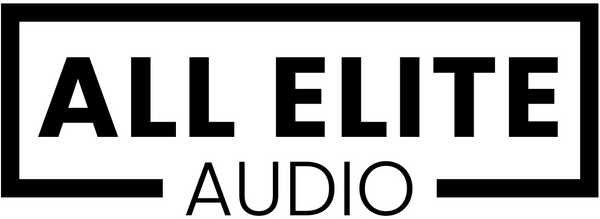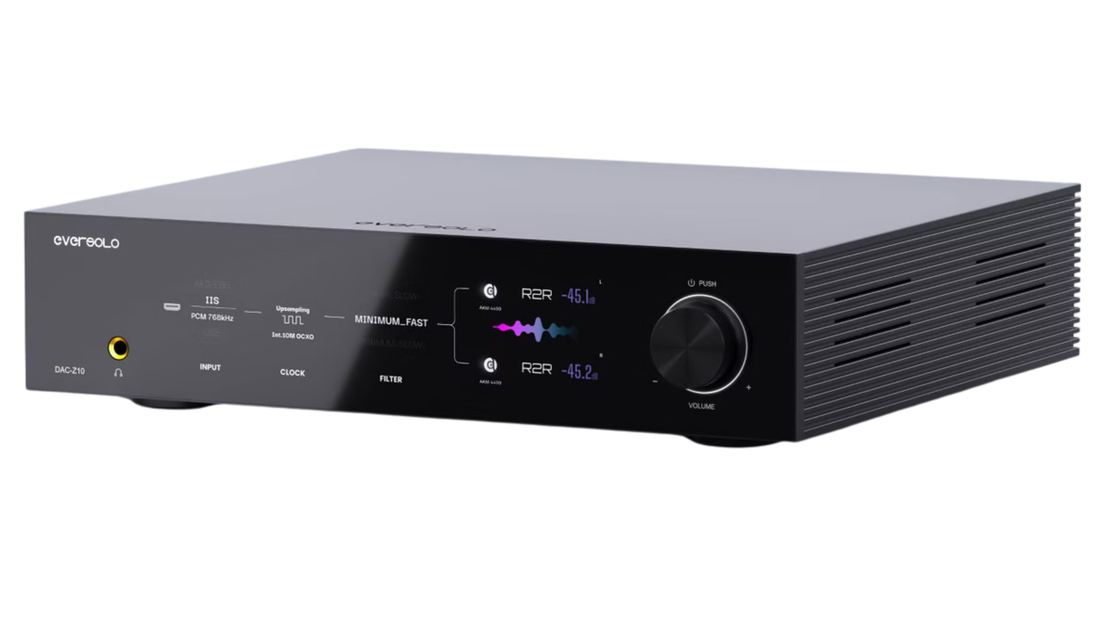Digital-to-Analog Conversion Stage
The Z10 uses two completely separate AKM AK4499EX DAC chips—one for the left channel, one for the right—each paired with its own AK4191EQ digital filter. Inside every chip, eight smaller DACs run in parallel and their outputs are combined to cancel tiny switching errors (glitches) and improve accuracy at low signal levels. The result is an extraordinary 129 dB dynamic range (the gap between the quietest and loudest sounds it can handle cleanly) and 0.00009 % total harmonic distortion plus noise—numbers that mean near-perfect silence between notes. For you, this translates to hearing the exact placement of every instrument in a 3D soundstage, the faint scrape of rosin on a violin bow, or the shimmer of a cymbal as it decays into silence—details that most built-in or mid-level DACs simply bury.

Passive R2R Volume Control
Instead of using op-amps or digital volume (which can thin the sound or shift stereo balance as you turn it down), the Z10 uses a passive R2R resistor ladder made from ultra-precise 0.05 % thin-film resistors. It has 128 steps, covering 0 dB down to –127.5 dB, with steps of 1 dB above –60 dB and finer 0.5 dB steps below that. Left and right channels stay matched within ±0.05 dB, and output impedance stays stable between 90–110 Ω no matter the volume. This means you can listen at whisper levels—perfect for late-night headphones or super-efficient horn speakers—without losing tonal richness, stereo imaging, or low-level detail, unlike digital volume controls that discard data and make music sound flat when turned down.
Master Clock Architecture
Two oven-controlled crystal oscillators (OCXOs)—one tuned to 45.1584 MHz for 44.1 kHz-based files (like CDs), the other to 49.1520 MHz for 48 kHz-based content—are kept at a constant temperature to within ±5 parts per billion. A femtosecond-grade phase-locked loop (PLL) locks every incoming digital stream to these ultra-stable clocks, achieving –112 dBc/Hz phase noise at 10 Hz offset—a measure of timing purity. This precision applies to every input, including Bluetooth LDAC. In practice, this means a piano note starts and stops exactly when it should, drum hits land with perfect timing, and vocals stay locked in space—whether you’re using a high-end USB transport, an I²S streamer, or just your phone. No more “digital haze” or blurred imaging from poor timing.
Power Supply Implementation
The Z10 uses three separate toroidal transformers: one 35 VA unit for the left analog stage, another identical one for the right, and a 25 VA unit for all digital circuits. Each feeds its own discrete shunt regulator using MOSFETs and multi-stage filtering, rejecting power line noise by more than 120 dB at 120 Hz. Every section is wrapped in mu-metal shields to block magnetic interference. The result is an absolutely black noise floor—so quiet that you hear the intake of a singer’s breath, the fade of a reverb tail, or the natural air in a concert hall recording. Even when paired with ultra-sensitive planar headphones or high-gain amps, the music floats free of hum, buzz, or AC-related grain.
Input/Output Interface Matrix
|
Input
|
Type
|
Max Resolution / Level
|
Key Features
|
|---|---|---|---|
|
USB-B
|
Digital
|
PCM 32/768, DSD512 native
|
XMOS XU316, asynchronous, galvanic isolation
|
|
I²S (HDMI)
|
Digital
|
PCM 32/768, DSD512 native
|
Pin-configurable phase/polarity
|
|
AES/EBU
|
Digital
|
PCM 24/192, DSD64 DoP
|
Transformer-isolated
|
|
Coaxial / Optical
|
Digital
|
PCM 24/192, DSD64 DoP
|
SRC4382 jitter-immune receiver
|
|
Bluetooth 5.0
|
Digital
|
LDAC 96/24, aptX HD
|
QCC5125, re-clocked to OCXO
|
|
Analog RCA
|
Analog
|
2.0 Vrms nominal
|
100 kΩ input impedance, direct to passive volume
|
|
Output
|
Type
|
Level
|
Key Features
|
|---|---|---|---|
|
XLR
|
Balanced analog
|
4.0 Vrms
|
DC-coupled, < 50 Ω source impedance
|
|
RCA
|
Single-ended analog
|
2.0 Vrms
|
DC-coupled, < 50 Ω source impedance
|
One box now handles every source—digital or analog. Feed it from a laptop, streamer, CD player, pro interface, phone, or a turntable with external phono stage via the dedicated analog RCA input; the signal bypasses the DAC entirely and goes straight to the passive R2R volume and outputs. Use XLR for long balanced runs to studio monitors or RCA for vintage tube amps—both with full drive and zero added noise.
User Interface, Monitoring, and Analog Input
A bright 4.3-inch color LCD shows album art, input format, sample rate, and two analog-style VU meters that move smoothly like classic needle meters. It also includes a 31-band real-time spectrum analyzer so you can see the frequency balance of your music. You control everything via a front-panel knob or the free Eversolo Control app on your phone or tablet—switch inputs (including the analog RCA line-in), adjust volume, select digital filters, or update firmware without leaving your chair. The analog input lets you use the Z10 as a pure analog preamp for vinyl, tape, or any line-level source, giving you the same transparent volume control and clean output drive for analog playback as you get from digital.

Design Intent and Application Fit
With native DSD512 and PCM 32/768 kHz decoding, a completely passive analog path, full analog input, and universal connectivity, the Z10 is built to be the final DAC and preamp in your system. It cleanly replaces the DAC section in all-in-one streamers (like the DMP-A6 or A8) for dramatically better clarity, future-proofs your setup as ultra-high-resolution files become more common, and serves as a single, no-compromise hub for every digital and analog source in your home.

